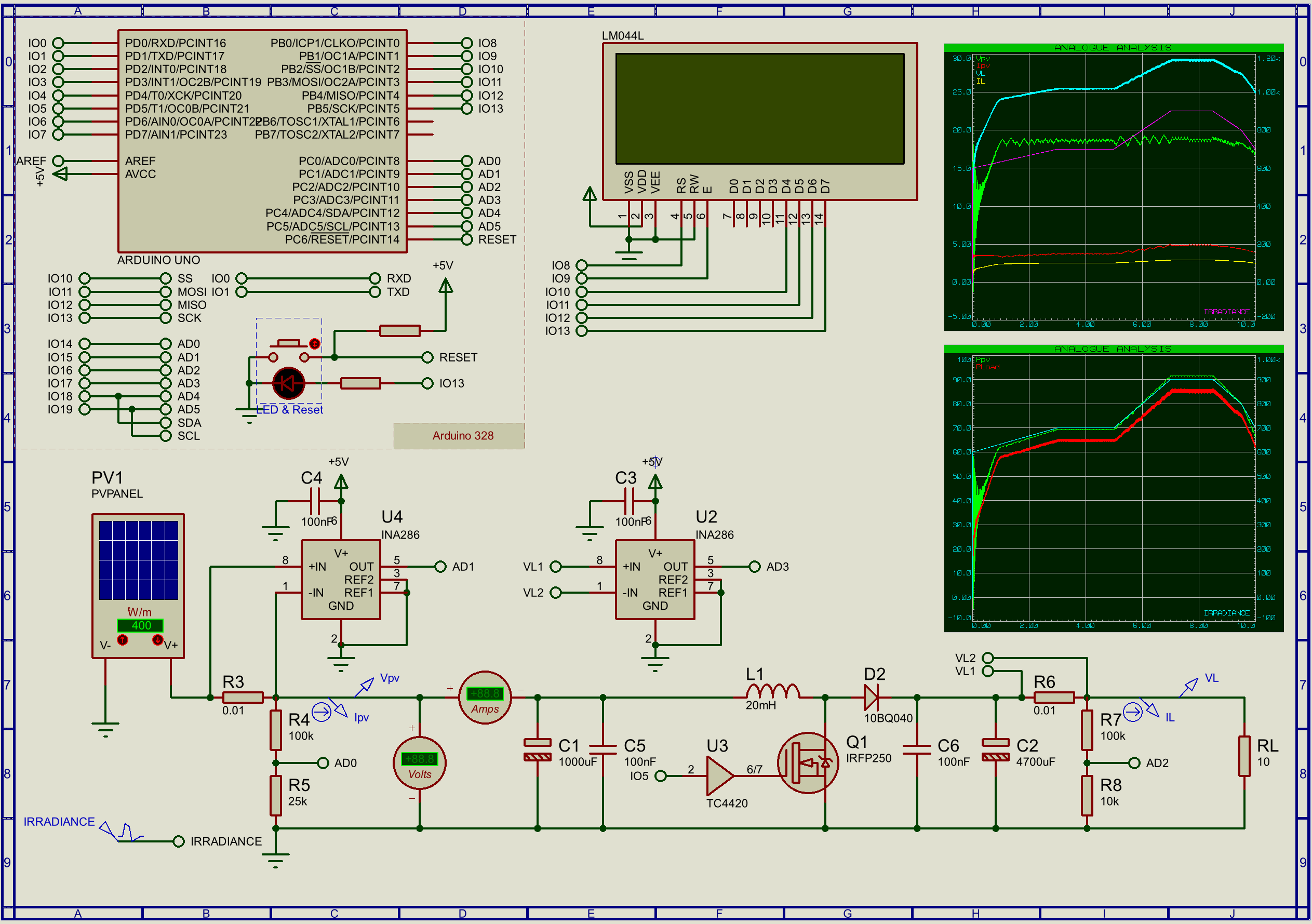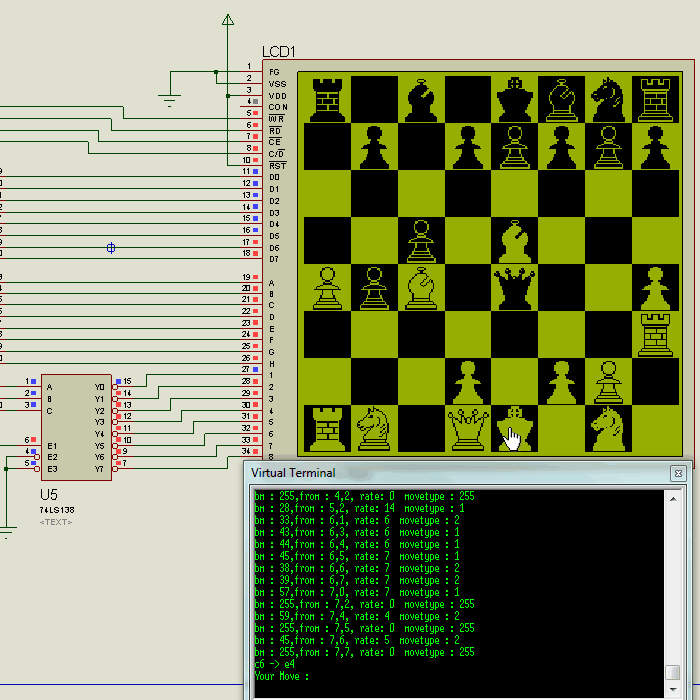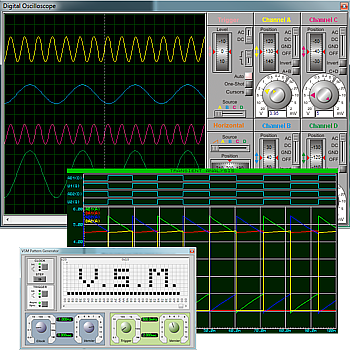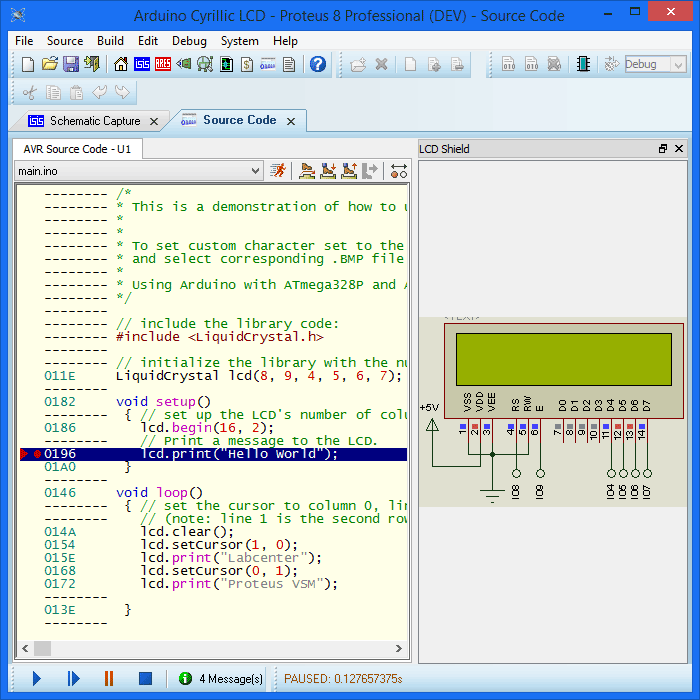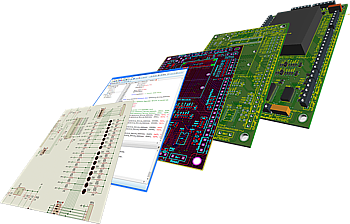
Complete Embedded Workflow
For embedded engineers, Proteus VSM bridges the gap in the design life cycle between schematic capture and PCB layout. It enables you to write and apply your firmware to a supported microcontroller on the schematic and then co-simulate the program within a mixed-mode SPICE circuit simulation, including MCU peripherals.
You can interact with the design using on screen indicators such as LED and LCD displays as well as actuators such as switches and buttons. Proteus VSM also provides extensive debugging facilities including breakpoints, single stepping and variable display for both assembly code and high level language source.
Proteus VSM Environment
Proteus VSM is much more than a microcontroller simulator. It is a system level simulation, analysis and debug environment for electronic design. Click on the hotspots below to see different parts of a Proteus simulation.
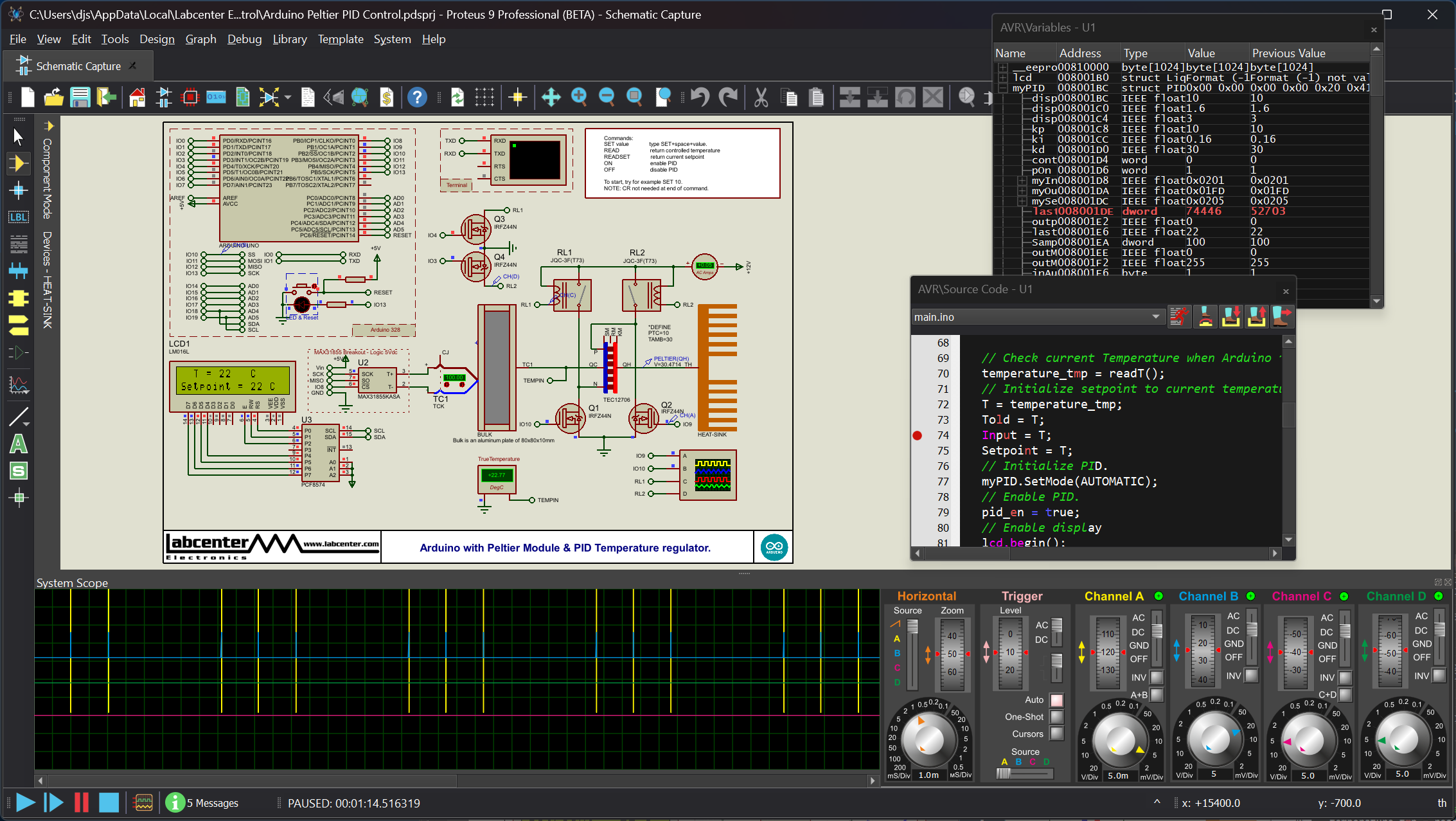
Design
Proteus VSM uses our proven Schematic Capture software to provide the environment for design entry and development. Proteus Schematic is a long established product and combines ease of use with powerful editing tools. It is capable of supporting schematic capture for both simulation and PCB design. Designs entered in to Proteus VSM for testing can be netlisted for PCB layout either with our own PCB Design products or with third party PCB layout tools. Proteus also provides a very high degree of control over the drawing appearance, in terms of line widths, fill styles, fonts, etc. These capabilities are used to the full in providing the graphics necessary for circuit animation.
Simulation
The most exciting and important feature of Proteus VSM is its ability to simulate the interaction between software running on a microcontroller and any analogue or digital electronics connected to it. The micro-controller model sits on the schematic along with the other elements of your product design. It simulates the execution of your object code (machine code), just like a real chip. If the program code writes to a port, the logic levels in circuit change accordingly, and if the circuit changes the state of the processor's pins, this will be seen by your program code, just as in real life.
The VSM CPU models fully simulate I/O ports, interrupts, timers, USARTs and all other peripherals present on each supported processor. It is anything but a simple software simulator since the interaction of all these peripherals with the external circuit is fully modelled down to waveform level and the entire system is therefore simulated.
With over 750 supported micro-processor variants, many thousands of embedded SPICE models and one the worlds largest libraries of embedded simulation peripherals, Proteus VSM remains the first choice for embedded simulation.
Measurement and Analysis
The go to instrument in Proteus is the system scope, which does not require a component to be placed and wired. Simply launch with a button press during a simulation run (it appears docked at the bottom of the application) and then live probe wires of interest as the simulation progresses.
If you need more tailored tools Proteus includes a number of placable virtual instruments including Logic Analyser, Function Generator, Pattern Generator, Counter Timer and Virtual Terminal as well as simple voltmeters and ammeters. In addition, we provide dedicated Master/Slave/Monitor mode protocol analysers for SPI and I2C - simply wire them onto the serial lines and monitor or interact with the data live during simulation. A truly invaluable (and inexpensive!) way to get your communication software right prior to hardware prototyping.
Should you wish to take detailed measurements on graphs, or perform other analysis types such as frequency, distortion, noise or sweep analyses of analogue circuits, you can purchase the Advanced Simulation Option. This option also includes Conformance Analysis - a unique and powerful tool for Software Quality Assurance.
Debugging
Whilst Proteus VSM is already unique in its capability to run near real time simulations of complete micro-controller systems, its real power comes from its ability to perform these simulations in single step mode. This works just like your favourite software debugger, except that as you single step the code, you can observe the effect on the entire design - including all the electronics external to the microcontroller.
In addition to traditional debugging where you set one or breakpoints in your source and then step the code when they are triggered, Proteus allows you to set breakpoints on the schematic so that a hardware condition can trigger a breakpoint. If a problem is identifiable as a hardware fault, then using hardware breakpoints will pause the simulation whenever the fault condition occurs. For example, if malformed characters were appearing on the LCD display setting a hardware breakpoint on the busy line would be a good place to start investigating.
The other major tool at your disposal for single step debugging is the watch window. This allows register and/or address monitoring and also allows you to add variables from the variables window for inspection. You can set breakpoints on a logical condition of any item added to the watch window making it easy for example to trap a timer overflow.
 Ask An Expert
Ask An Expert
Have a Question? Ask one of Labcenters' expert technical team directly.
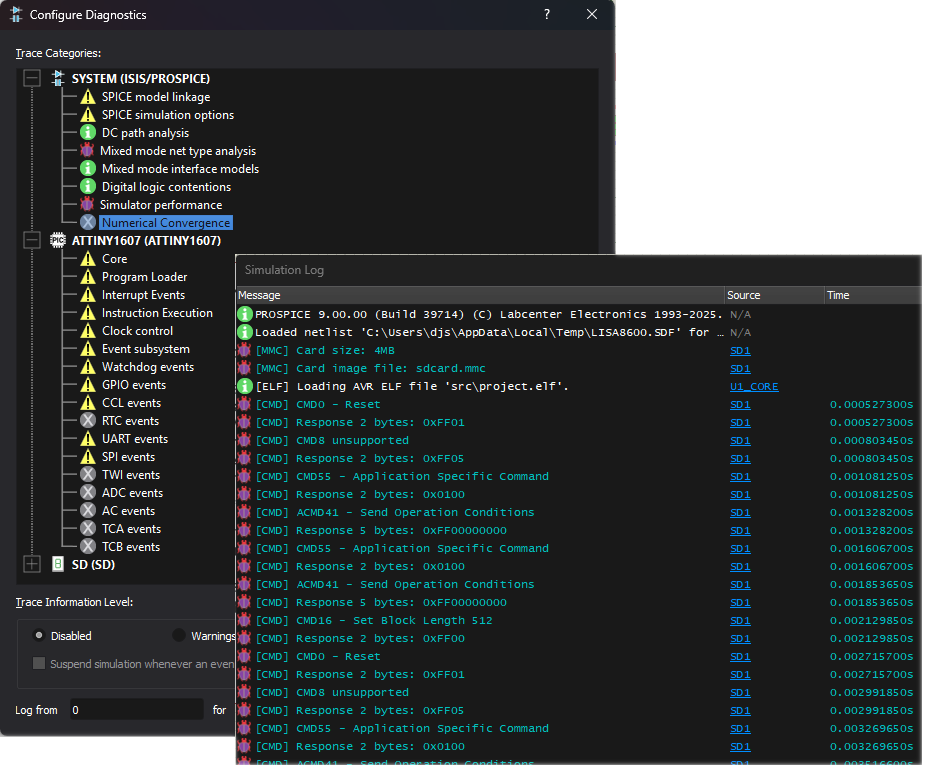
Diagnostics
Proteus is equipped with comprehensive diagnostic or trace messaging. This allows you to specify which components or processor peripherals that are of interest at any given time and receive detailed textual reporting of all activity and system interaction. You can specify which on-board peripherals of the MCU that you want to monitor (e.g. SPI, VIC) and also monitor external peripherals such as memory devices, LCD displays or brushless motors.
This ability to monitor both sides of communications is invaluable as a debugging aid, allowing you to locate and fix problems in both software and hardware much faster than you could when working on a physical prototype.
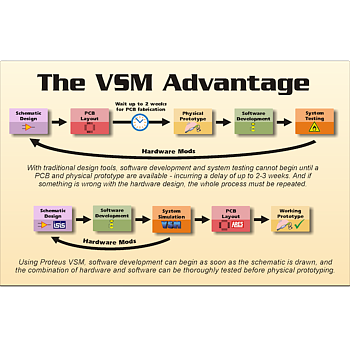
The VSM Advantage
The Proteus Design Suite is wholly unique in offering the ability to co-simulate both high and low-level micro-controller code in the context of a mixed-mode SPICE circuit simulation. With this Virtual System Modelling facility, you can truly use agile development philosophy in embedded engineering projects, reaping huge rewards in terms of reduced time to market and lower costs of development.
If one person designs both the hardware and the software then that person benefits as the hardware design may be changed just as easily (and at the same time) as the software design. In larger organisations where the two roles are separated, the software designers can begin work as soon as the schematic is completed; there is no need for them to wait until a physical prototype exists.
In short, Proteus VSM improves efficiency, quality and flexibility throughout the design process...
